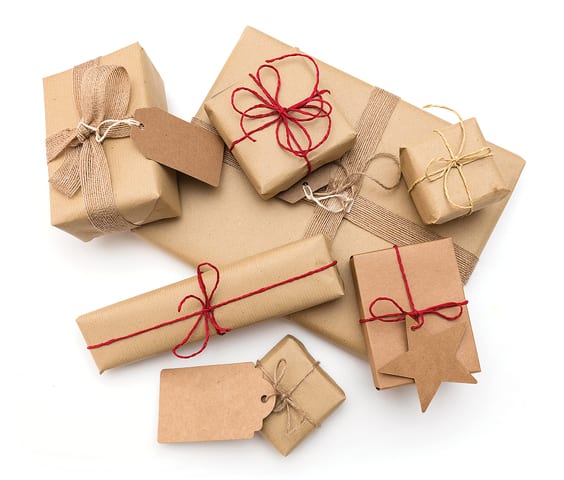In these modern-times, the “Three Rs” have become “reduce, reuse, recycle.” December may be the hardest month to keep that in mind.
One little nudge is the first-time calendar illustrated by contest-winning Centre County fifth-graders: “How My Buddies and I Recycle.” Finishing the year, December illustrator Brenda St. Clair of Pleasant Gap Elementary School shows a new family tradition: two people take a tall load – possibly post-holiday wrapping paper – to a recycling bin.
The unsaid message is that holiday gift wrap could receive a second life as either a gift box or a stiff back for a tablet, if it’s recycled instead of being pitched into a garbage can.
The student calendar spotlights the Centre County Recycling & Refuse Authority, which has fielded more than 100 recycling containers from its 253 Transfer Road, Bellefonte, headquarters.
“Weis Markets did this as a surprise for us,” reports a smiling Joanne Shafer, the CCRRA’s deputy executive director, as well as its recycling coordinator.
Although December is the big waste-creating month for most households, it’s not the biggest month for the CCRRA. With out-of-town holiday travel, fewer householders are here. Those staying, Shafer says, contribute only about 1,000 tons of recyclable material (and another 9,000-some tons of trash).
According to Shafer, the heaviest county truckloads – particularly the State College area’s – are, in descending order: Penn State home football games, major apartment moving in and out days, the Central Pennsylvania Festival of the Arts, events at the on-campus Bryce Jordan Center. Overall, the CCRRA handles annually more than 12,000 tons of recyclables and 100,000 tons of trash.
But, no matter the household count, paper recycling is on the upswing after Christmas and Chanukah (or Hanukkah; the several spellings tackle pronunciation).
Prohibited from the “mixed paper” receptacles is gift-wrap resembling aluminum foil. Certainly a shame, it’s so pretty. Because of fiber content, says Shafer, it can’t be processed with mixed paper. It can’t even go into the recycling bins for aluminum foil and tin cans (cat-food cans, for some of us). It looks the same, but isn’t. Ribbon that’s basically cotton is OK; metallic ribbon, elasticized ribbon, aren’t. “Cloth ribbon should be reused.” Packaged synthetic bows that glue-on are, thankfully, recyclable with paper.
Since inception in 1971, more and more kinds of containers have been accepted. In her 27 years on the job. Shafer has actively secured buyers for newsprint and magazines, new and used mixed paper/cardboard, plastic bottles and jars/jugs, metal cans and foil, glass bottles and jars, corrugated cardboard. And the list has grown. “Miscellaneous plastics” like my yogurt containers are now accepted at a few locations. In the future, there will be cloth and possibly milk-container recycling.
Still unchanged is the fact that the Borough of State College accepts more kinds of things than do other parts of the county. Since 2013, it has taken an organic approach – collecting at curbside things that once lived. For instance, says Shafer: “If you live in State College, you can put out your turkey bones and leftover stuffing.”
Overall, “We are among the top 10 programs in the commonwealth,” says Shafer, who’s been very active on the national scene, too.
Countywide, she says, “The authority has set a zero-waste goal by 2035.”
Reuse Training and Gifts
“Reuse” entered my vocabulary when I was about the same age as the calendar illustrators.
At my best friend Nancy’s home – two doors away, in the 700 block of South Allen Street – I learned wrapping from her mom, Jen Ferguson, a sensible person with an Iowa-farm rearing. Trying to follow her example, I learned the trickiness of lining-up gift paper so expertly that you couldn’t see the fold marks from last year’s gift.
This “reuse” idea was reinforced every time I saw beautiful paper used only once.
“Reduce” could also describe my husband’s gifting in his 60s. Aghast over the pile of past gifts, Bill henceforth gave adults unwrapped “comestibles.” Imported cheeses and local jellies might not have been eye-popping, but they didn’t linger.
It may be age, but today I buy a reusable holiday bag and enough tissue paper to hide what’s inside.
The “reduce” concept certainly isn’t untapped in Shafer, who favors keeping costs down and ingenuity up. “Make the wrapping part of the gifts,” she says, suggesting that kitchen supplies, for instance, be put in a basket or box and tied with a ribbon or “a pretty dishtowel.” To minimize waste and disappointment, “I encourage people to ask friends and family what they want.” She gives her reader daughter a gift card for books. “Young people love gift cards,” she says. “‘Re-gifting’ has gotten a bad name” but makes sense. And some people could use “a gift of time.”
That last gift idea brings to mind special giving – the dollars deposited in Interfaith Mission and Salvation Army outdoor collection buckets, given to charities represented at the Alternative Christmas Fair (December 3) run by the University Baptist and Brethren Church, donations to the Marines Corps’ Toys for Tots program.
Usually discovered in stores and at the county’s numerous holiday bazaars, gifts are almost always dressed-up for giving. It’s a good idea to remember what happens next. For the 2017 calendar year, a group of fifth graders has helped spread the word about the Centre County Recycling & Refuse Authority’s modern-day “Three Rs.”



